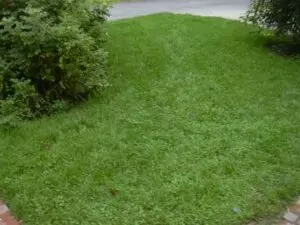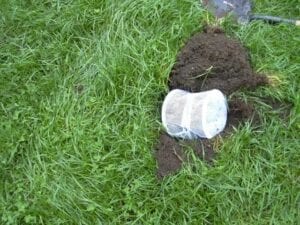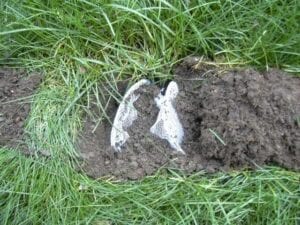MIKE’S EXPERIMENT
Home / MIKE’S EXPERIMENT
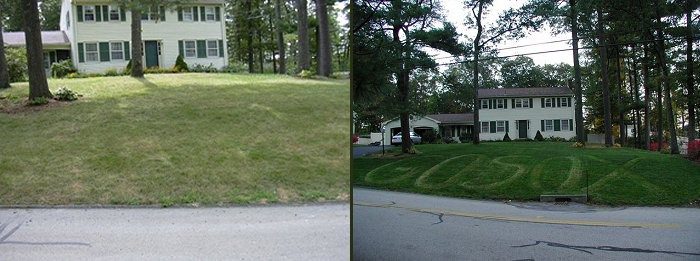
After gaining experience working with lawns and living materials, Mike has had time to wonder about the world he works with. Here, he discusses some of his theories, projects, and experiments for the curious lawn owner.
Dormant Seeding
LawnDormant seed in a battered lawn
Here are a few pictures of dormant seeding in my backyard. This area gets trampled by kids playing, hanging around the picnic table and running to the tree house in the Norway maple. This grass has held up well over the past couple of years and I apply the dormant seed each winter to thicken and rejuvenate it. It is a bit of a gamble, but so easy it’s worth it. I just wait until a good snow storm is on the way.
A cover of snow
Organic Soil Solutions Lawn Under a Cover of SnowI prefer one of those gray days when the ground is frozen and you can almost smell the snow coming. I spread the appropriate or left over grass seed on the frozen ground and go inside to warm up and watch the snow fall. Assuming the snow stays for a while, or perhaps all winter, you will not see the seed when it melts. It has worked its way into the soil, due to the freezing and thawing and melting, and will ready to germinate in the spring when it warms up.
Spring arrives
The best time to seed is late summer or early fall, but this is a fun way to apply seed to areas that get a lot of traffic or to thicken up any lawn. With the right weather, it works great. If we have a warm spell and the seed germinates before a subsequent freeze, it doesn’t work so well. Seeds that germinate quickly, such as perennial rye have a tougher time. Research shows that February is the best time for dormant seeding and that grass plants from dormant seeds have more stored energy, more complete root systems and are better able to handle the rigors of summer than those planted in the spring.
Grubs Experiment
Organic Soil Solutions Grub Experiment BeforeHere is a little experiment I tried in the spring of 2006. I had heard that grubs don’t like compost. I placed some compost in one side of a container and some soil, I thought grubs might like, in the other. I put 20 grubs in the compost side and removed the divider. Two days later there were 18 grubs in the soil side.
These results led me to believe that the beetles, laying the eggs that become grubs, would prefer not to lay their eggs in fresh compost. I had 5 customers with recurring grub problems. I felt that soil type may be a factor in why the beetles choose these sites year after year. In July, when the beetles were swarming, we top dressed these areas with compost. We had no grub damage in these lawns. In the spirit of full disclosure, I also applied some cedar granules, which repel insects to these areas.
Assuming it was the compost that repelled the insects, why? When I look on the web, most of the articles are about too many grubs in compost. I don’t think they are the same species. The professional compost makers I spoke to don’t have any grub problems in their piles. A scientist who works with grubs from Ohio State said that it is very possible that ammonium from the compost or the presence of nematodes and other micro biology may be a deterring factor. This spring we will try it again and monitor more closely. When I did it last year, I didn’t know it would work!
Living Proof
Organic Soil Solutions Experiment Shows That Life Thrives in Organic SoilIn an organic system, where we don’t spray herbicides, just about every bare spot without grass will generate some other type of plant life. Nature abhors a vacuum. Here a few pots of soil from various lawns that I put out in the sun to see what would pop up. With diffeent soil characteristics and a variety of weed seeds waiting for the opportunity to sprout, it’s amazing how many different plants grow.
Practice Makes Perfect
Organic Soil Solutions Experiment Testing Different Seed Blends on a Plot of LandWe like to test various seed blends to see what they look like and how they germinate and grow. We check out grass cultivars on NTEP (National Turfgrass Evaluation Program), which is a great resource and a valuable tool. There’s nothing like watching the seed grow next to my house, however, so I can get a feel for density, leaf texture, drought resistance and color.
A True Fan
Organic Soil Solutions Experiment Testing Different Seed Blends on a Plot of LandWe like to test various seed blends to see what they look like and how they germinate and grow. We check out grass cultivars on NTEP (National Turfgrass Evaluation Program), which is a great resource and a valuable tool. There’s nothing like watching the seed grow next to my house, however, so I can get a feel for density, leaf texture, drought resistance and color.
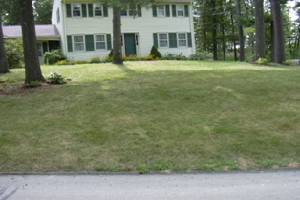
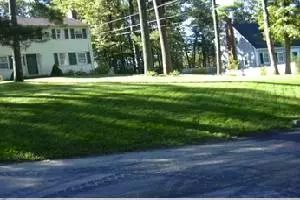
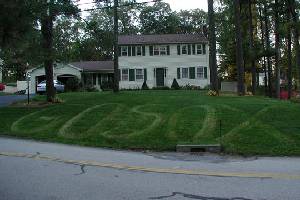
The Root of the Matter
I cut out two sections of lawn to see the difference in root growth from frequent, shallow watering and low mowing versus watering deeply once a week and mowing high. The watering test was pre-empted by an extraordinarily wet summer, but the mowing had an effect as evidenced by the longer roots on the right.
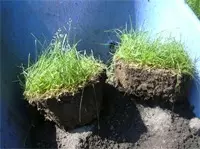
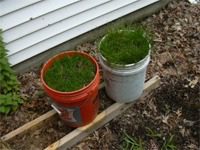
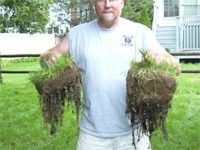
Nematode Efficiency
We wanted to make sure the nematodes we use for grub control were doing their job. We put an equal number of grubs in each pot and added nematodes to the brown one. Roots after a week were shorter and the grubs were active in the pot with no nematodes. This experiment is ongoing.
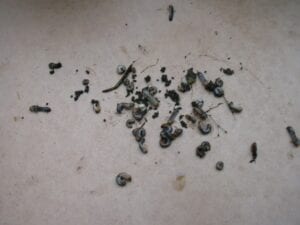
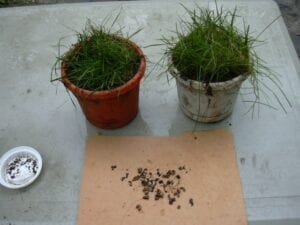
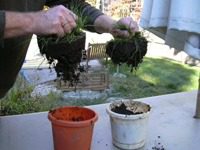
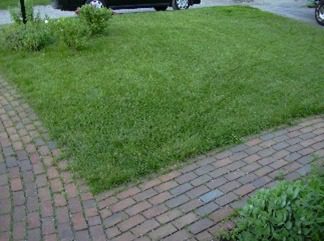
Seasonal Changes
Organic Soil Solutions Experiment Front Lawn in Spring My front yard in spring There is plenty of moisture, cool temperatures and biological activity. Most of our grasses are cool season varieties that love the spring and fall.
Organic Soil Solutions Experiment Front Lawn in Summer My front lawn in summer The grass will shut down in the hot summer if it’s not watered. An organic lawn with deep roots should bounce back in September.
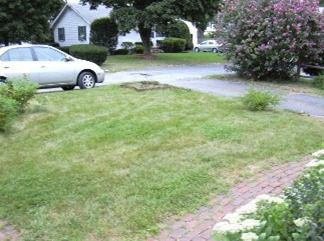
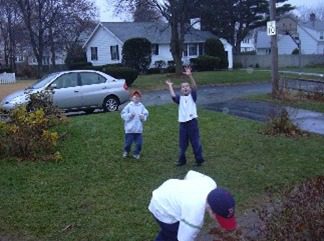
Organic Soil Solutions Experiment Frotn Lawn in Fall My front lawn in fall Back to cool weather and the most dependable rainfall of the year. There is little competition from weeds. Fall is the time for over seeding.
Measuring Biological Activity
Organic Soil Solutions Experiment Measuring Biological Activity in SoilOrganic Soil Solutions Experiment Active Soil Selection
One way to measure the biological activity in a soil is by taking some leaves and grass, putting them in a mesh bag and see how quickly they decompose when buried in the soil. I put one bag in what I considered an active soil and one in a soil that didn’t look so vibrant. Unfortunately, I didn’t get a chance to try this until rather late in the season and not much had happened when I dug them up in November. The bag in the active soil was covered with earthworms, however, and I can’t wait to try this again in the spring.

